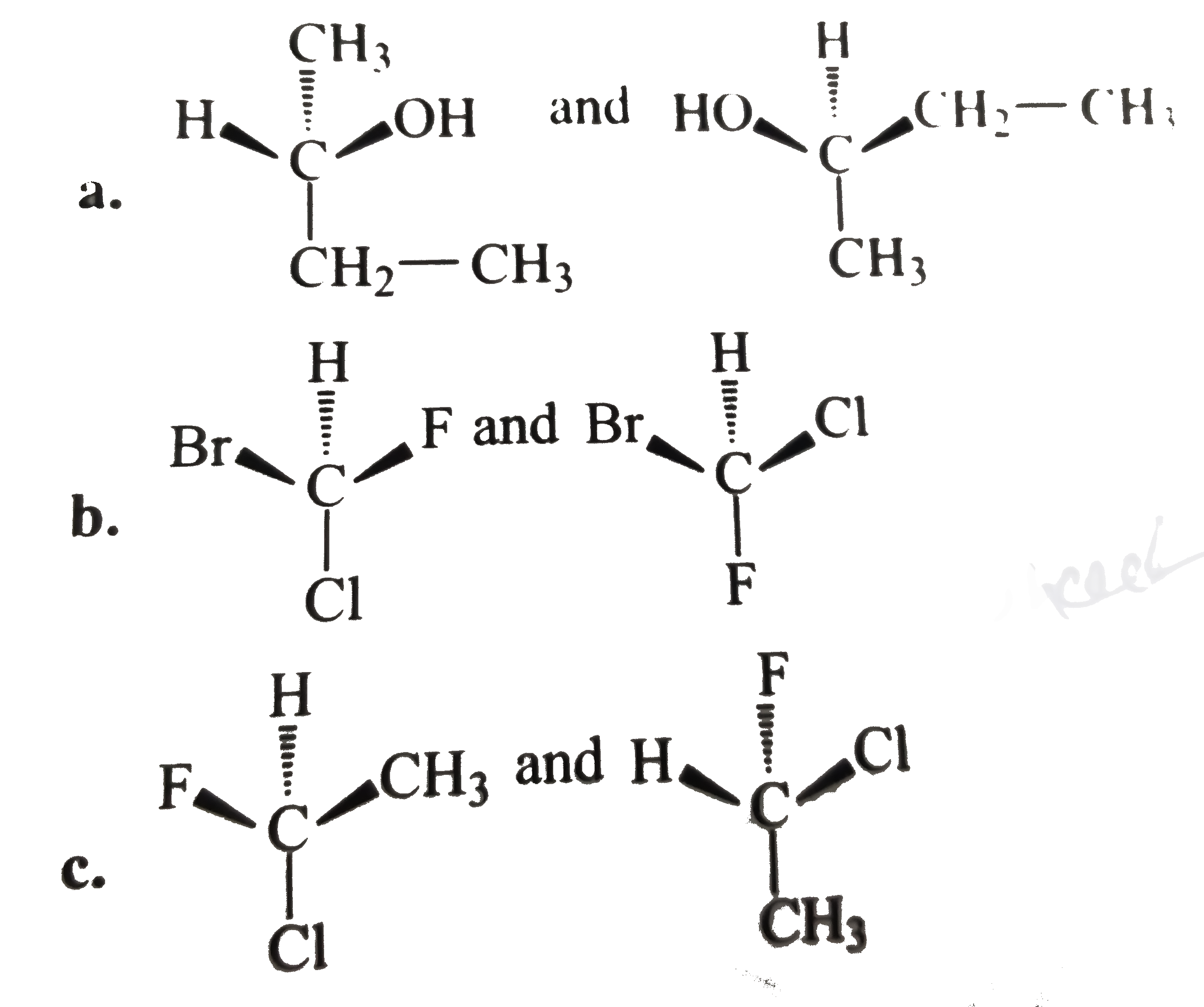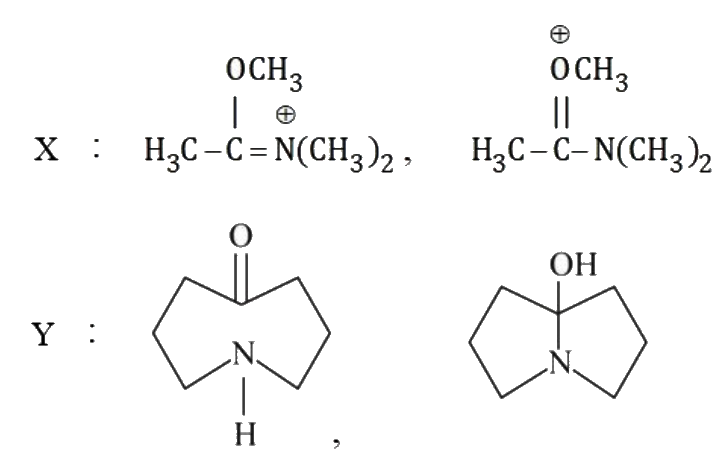Consider the following pair of structrue and tell whether they represent enantiomer or two molecules of the same compound in different oreintation.

Video Solution
Text Solution
One way to approach this kind of problem is to take one structrue. In your mind, hold it by one group and rotate the other group untill at least one group is in the same place as it is in the other structrue. By a series of rotations like this, you will be able to convert the sturctrue you are manipulating into one that is either identical with or the mirror image of the other. For example take, B, hold it by the C1 atom and rotate the other group about the (C∗−Cl) bond until bromine is at the bottom (as it is in A). Afterwards, hold it by the Br and rotate the other groups about (C∗−Br) bonds. This will make B identical with A
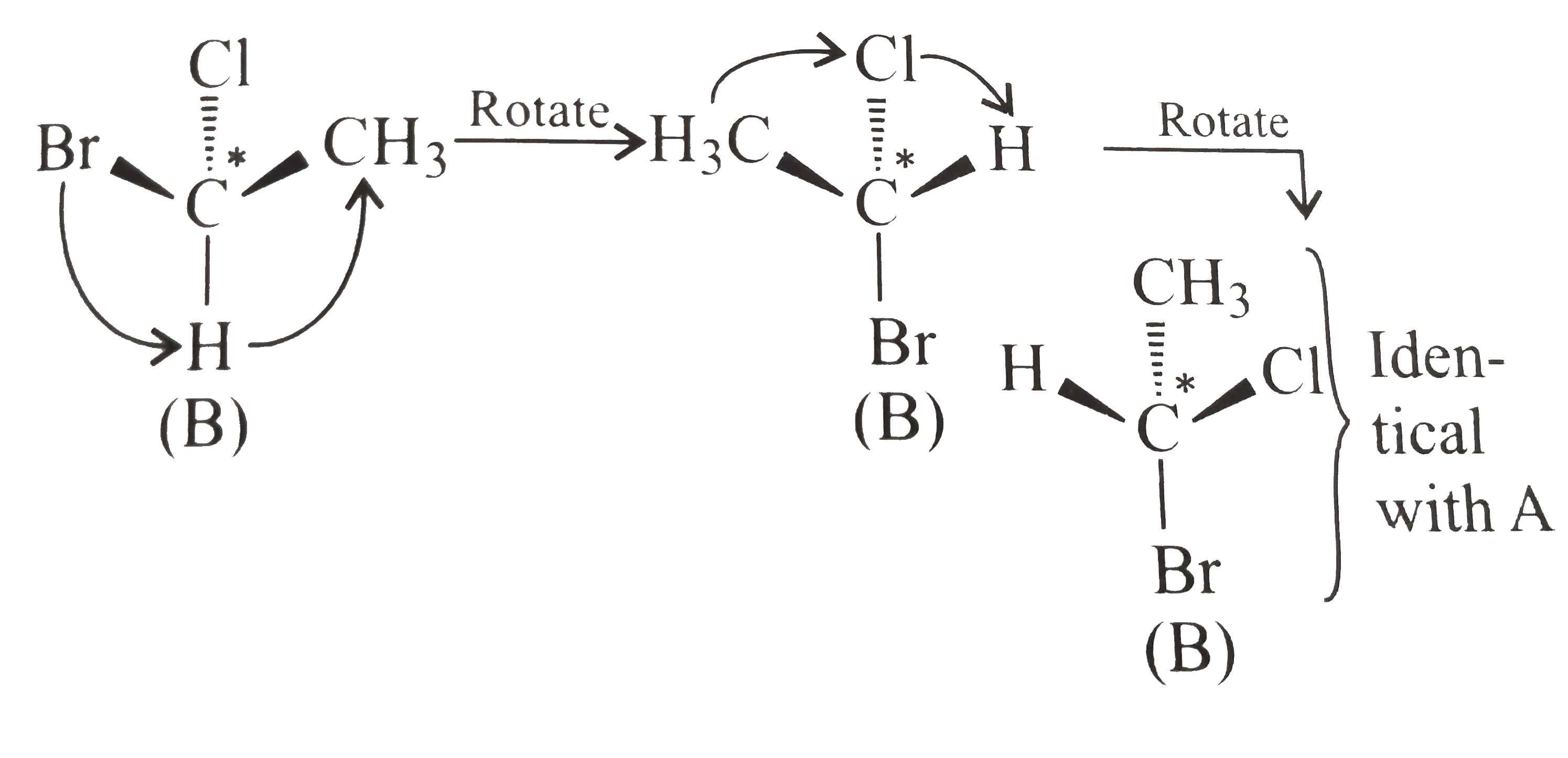
Another approach is to recognise that exchanging two groups at the stereocentre inverts the configuration of that carbon atom and converts a structrue with only one stereocentre into its enantiomers, a second exchange recreates the original molecule. So we proceed by, keeping track of how many exchanges are required to convert B into A. In this instance, we find that two exchanges are required, and gain we conclude that A and B are the same.
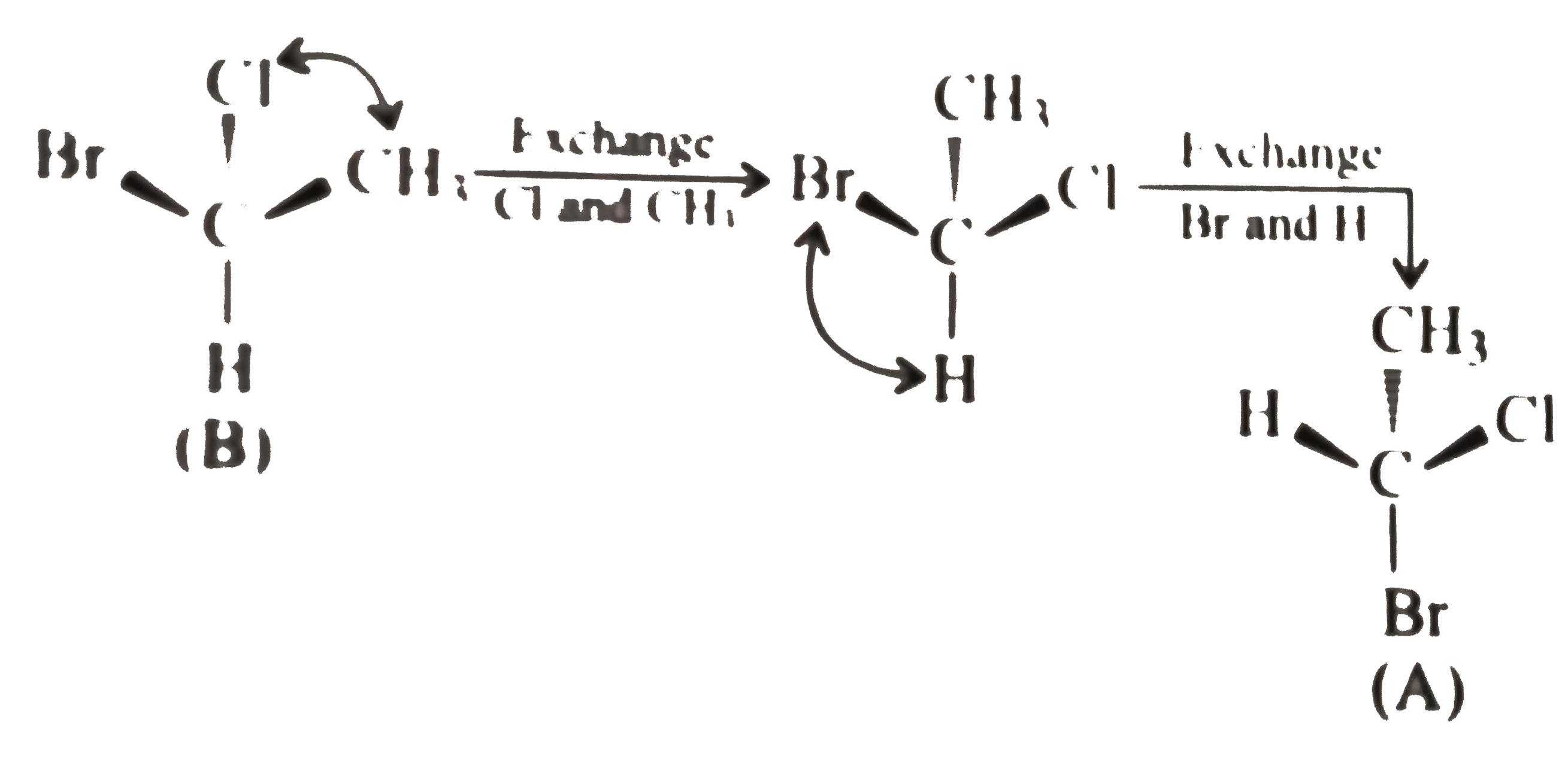
A useful check is to name each compound, including its (R−S) designation. If the names are same, the structrues are same. In this instance, both structrue are (R)-1-bromo-1-chloroethane.
Another method for assigning R and S configurations using one's hands as chiral templates has been described (Huheey, J.E.J. Chem. Educ. 1986, 63, 598-600). Groups at a stereocentre are correlated from the lowest to the highest priority with one's wrist, thumb, index finger, and second finger, respectively. With the ring and little fingers closed against the palm and viewing one's hand with the wrist away, if the correlation between the stereocentre is with the left hand, the configuration is S, if it is with the right hand, the configuration is R.
|
Topper's Solved these Questions
- ISOMERISMBOOK - CENGAGE CHEMISTRYCHAPTER - ISOMERISMEXERCISE - (Linked Comprehension Type)Exercise
14 Videos
- ISOMERISMBOOK - CENGAGE CHEMISTRYCHAPTER - ISOMERISMEXERCISE - Multiple choice questions (Exercise)
38 Videos
- ISOMERISMBOOK - CENGAGE CHEMISTRYCHAPTER - ISOMERISMEXERCISE - Example
15 Videos
- IONIC EQUILIBRIUMBOOK - CENGAGE CHEMISTRYCHAPTER - IONIC EQUILIBRIUMEXERCISE - Archives Subjective
28 Videos
- NCERT BASED EXERCISEBOOK - CENGAGE CHEMISTRYCHAPTER - NCERT BASED EXERCISEEXERCISE - Chemical Equilibrium
72 Videos
Similar Questions
Knowledge Check
Which of the following pairs of structures represent enantiomers?
A B
B C
C D
D
Which of the following pairs of compounds are enantiomers
A B
B C
C D
D
Which of the following pairs of compounds are enantiomers?
A B
B C
C D
D
Consider the following pair of compound
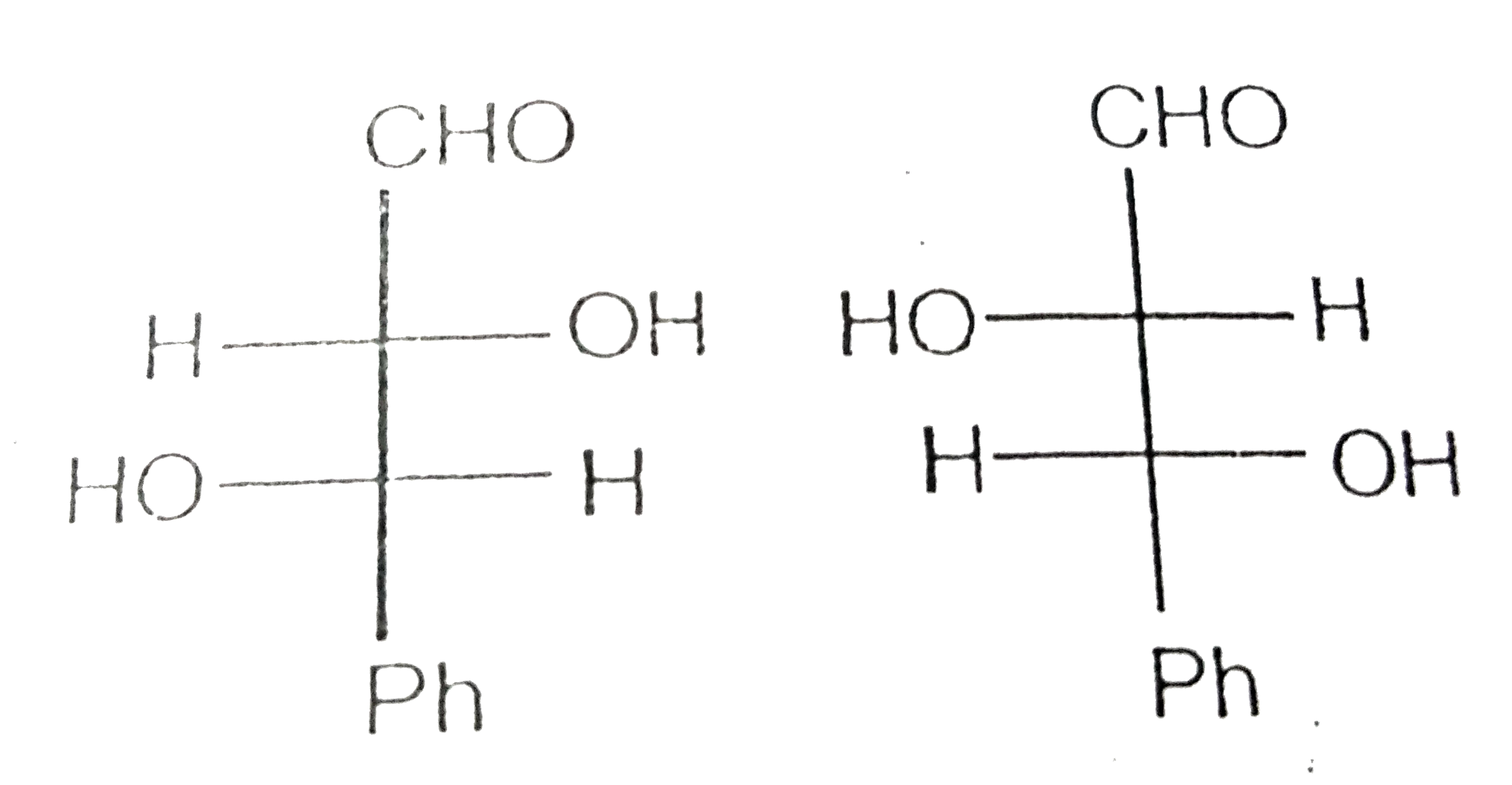
which of the following statement is correct
View SolutionConsider the following pairs of structrue. Identify the relationship between them by describing them as presenting enantiomers, diastereomers, consitutional isomers, or two molecule of the same compound.
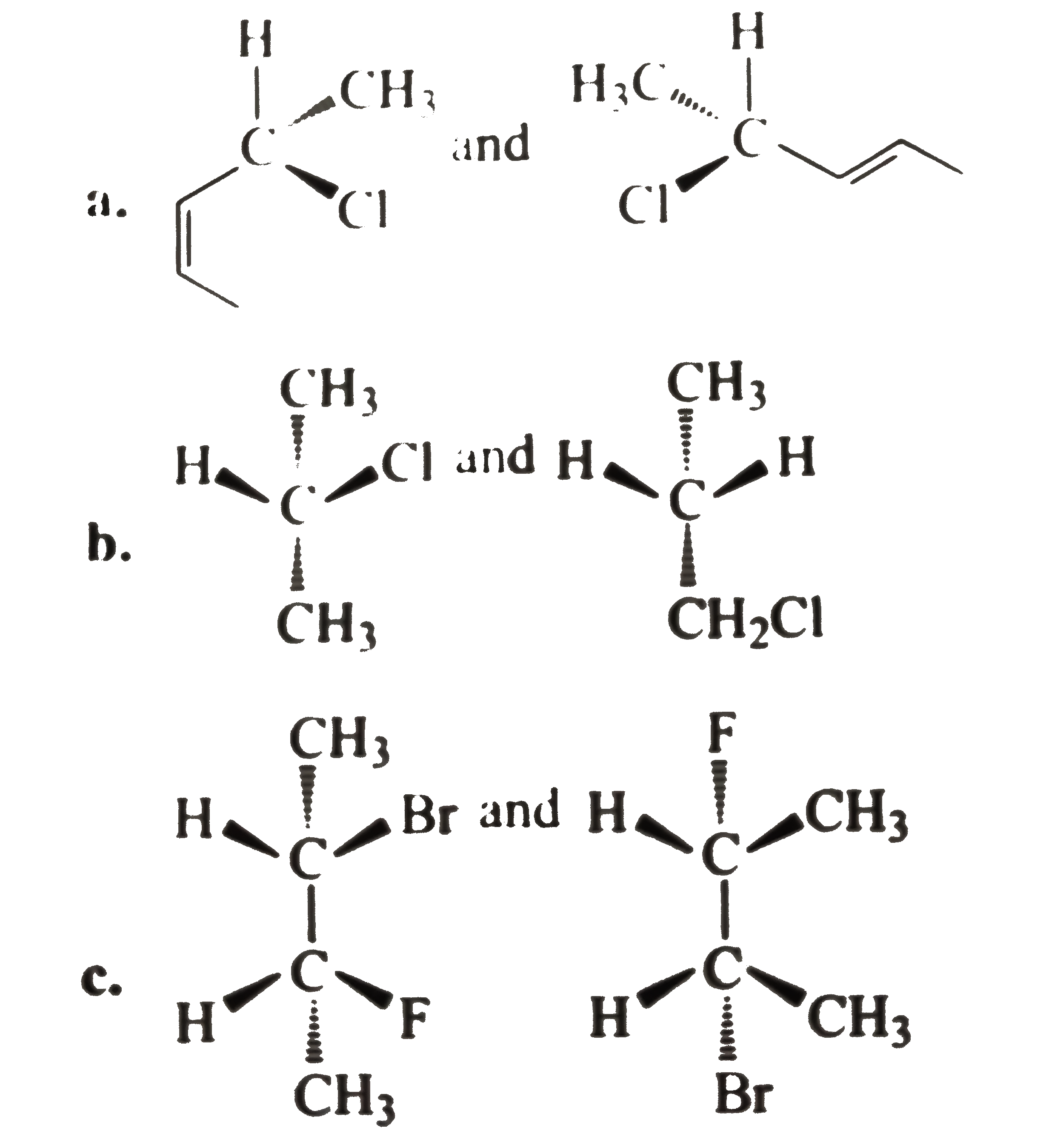
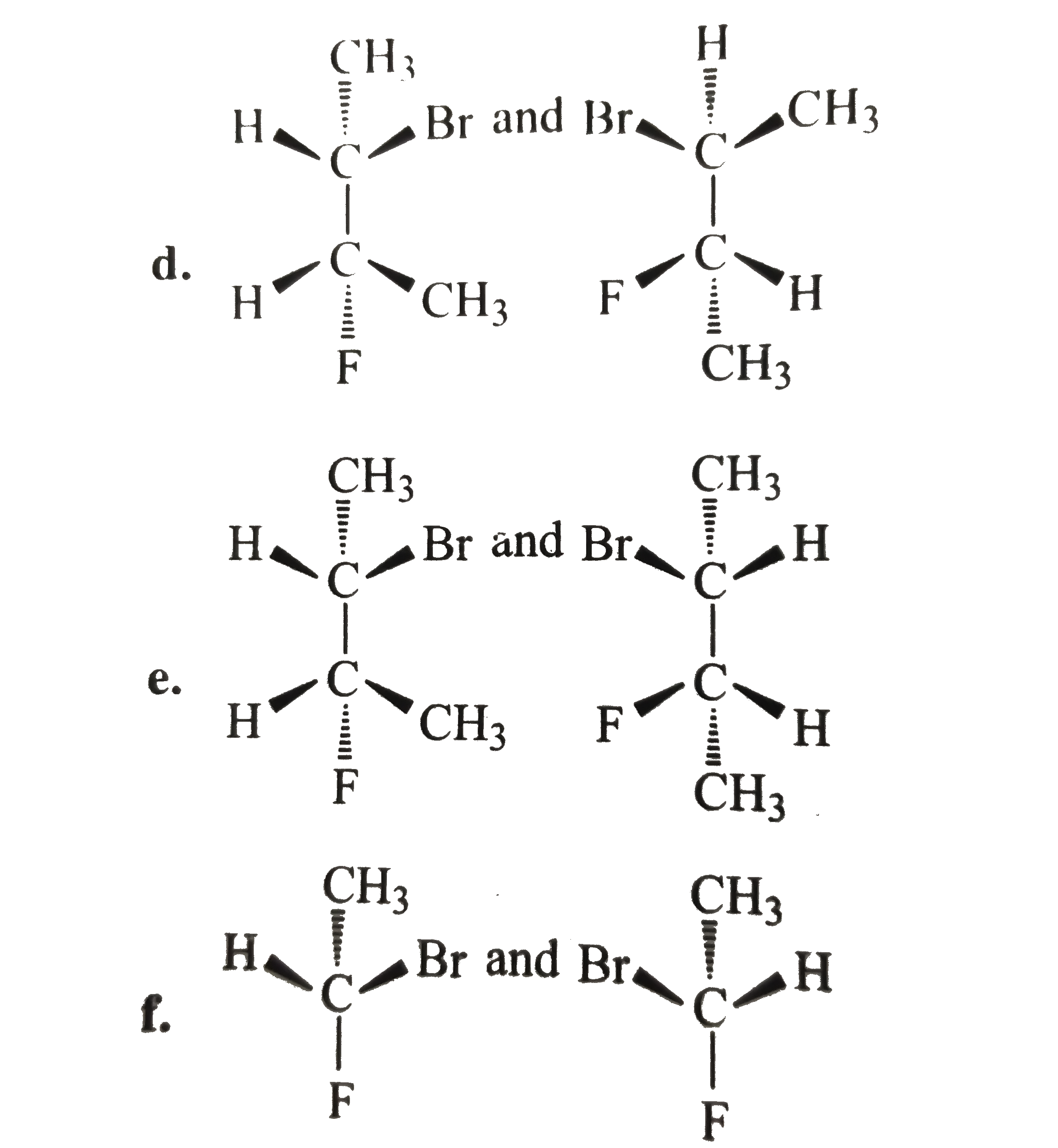
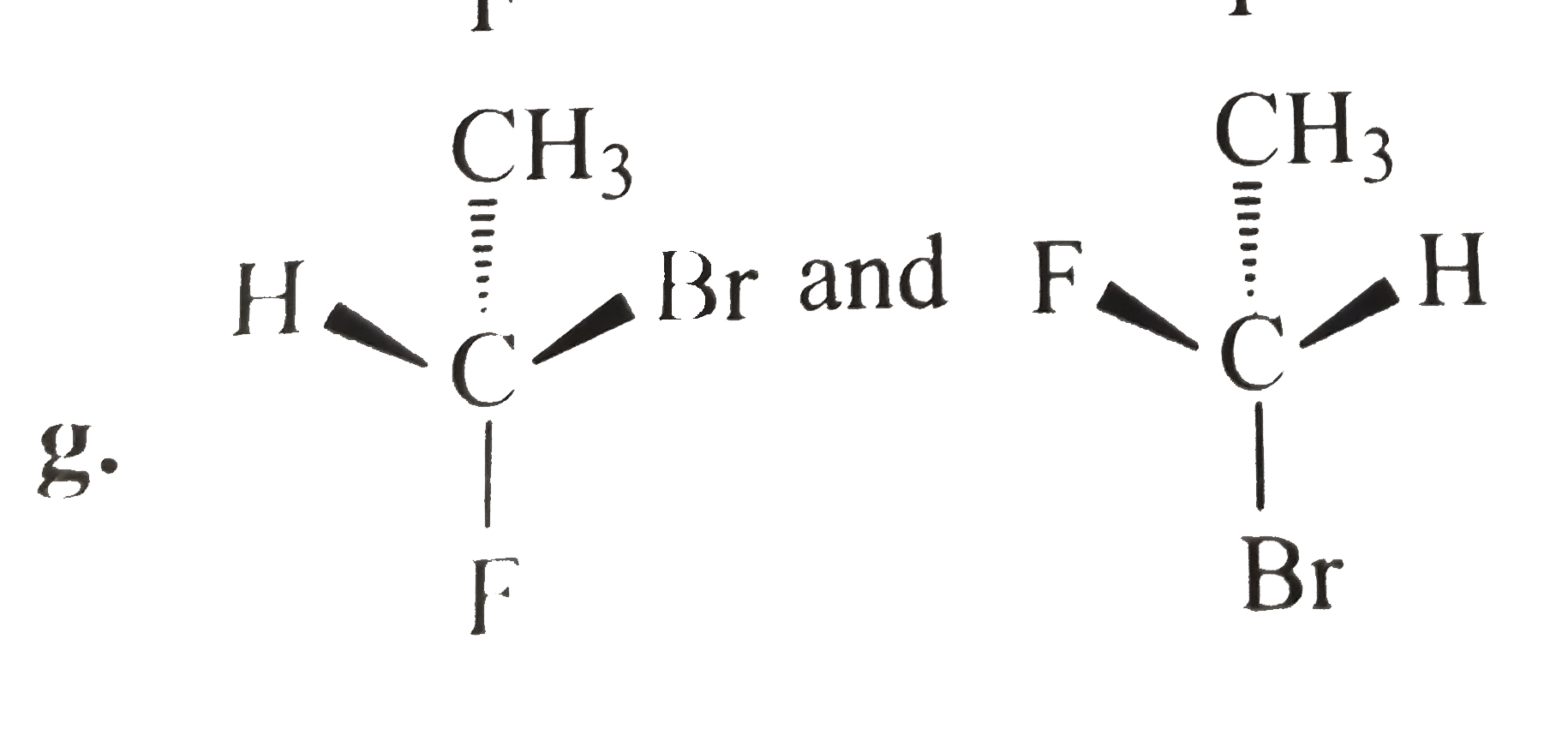
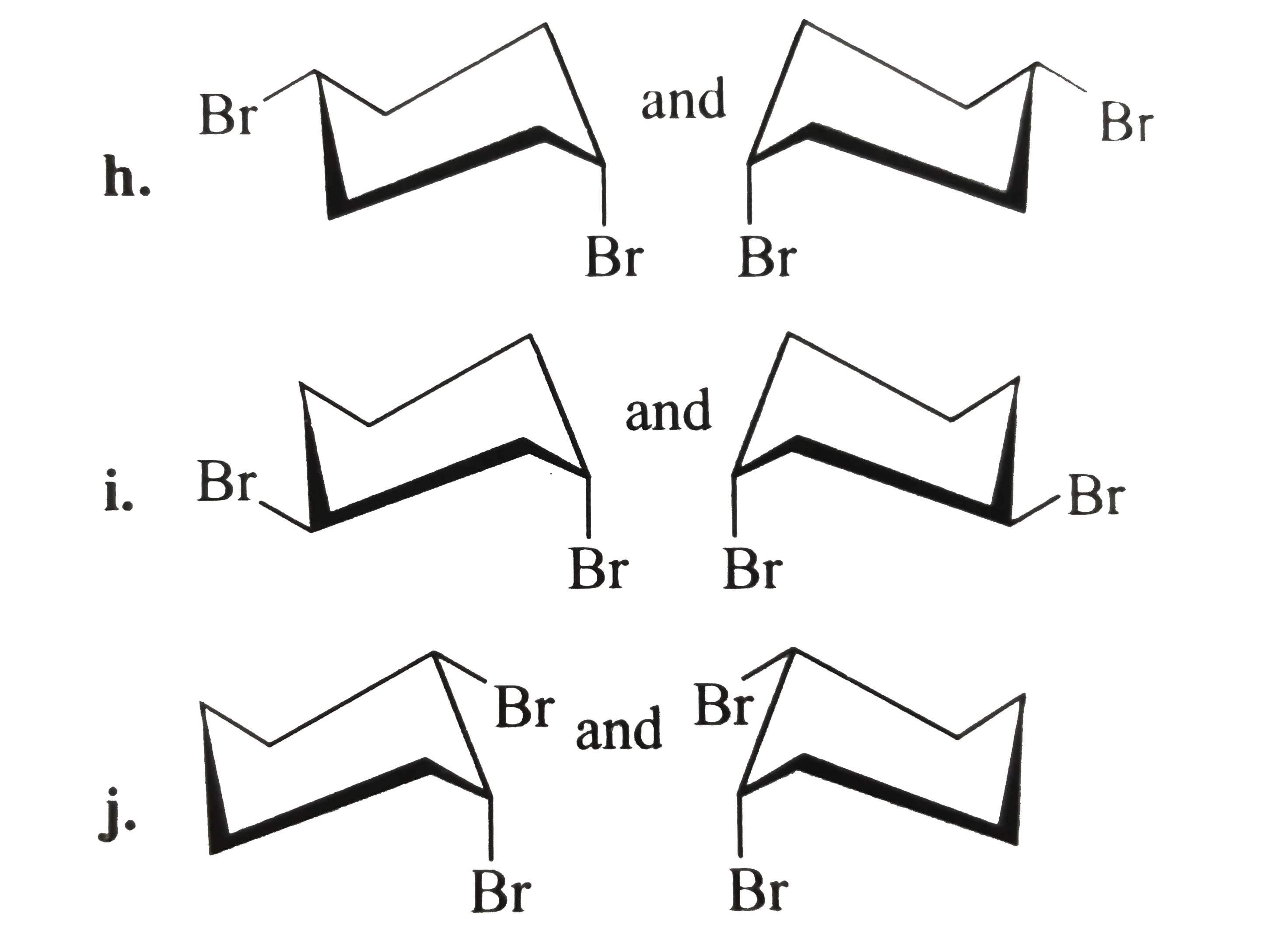
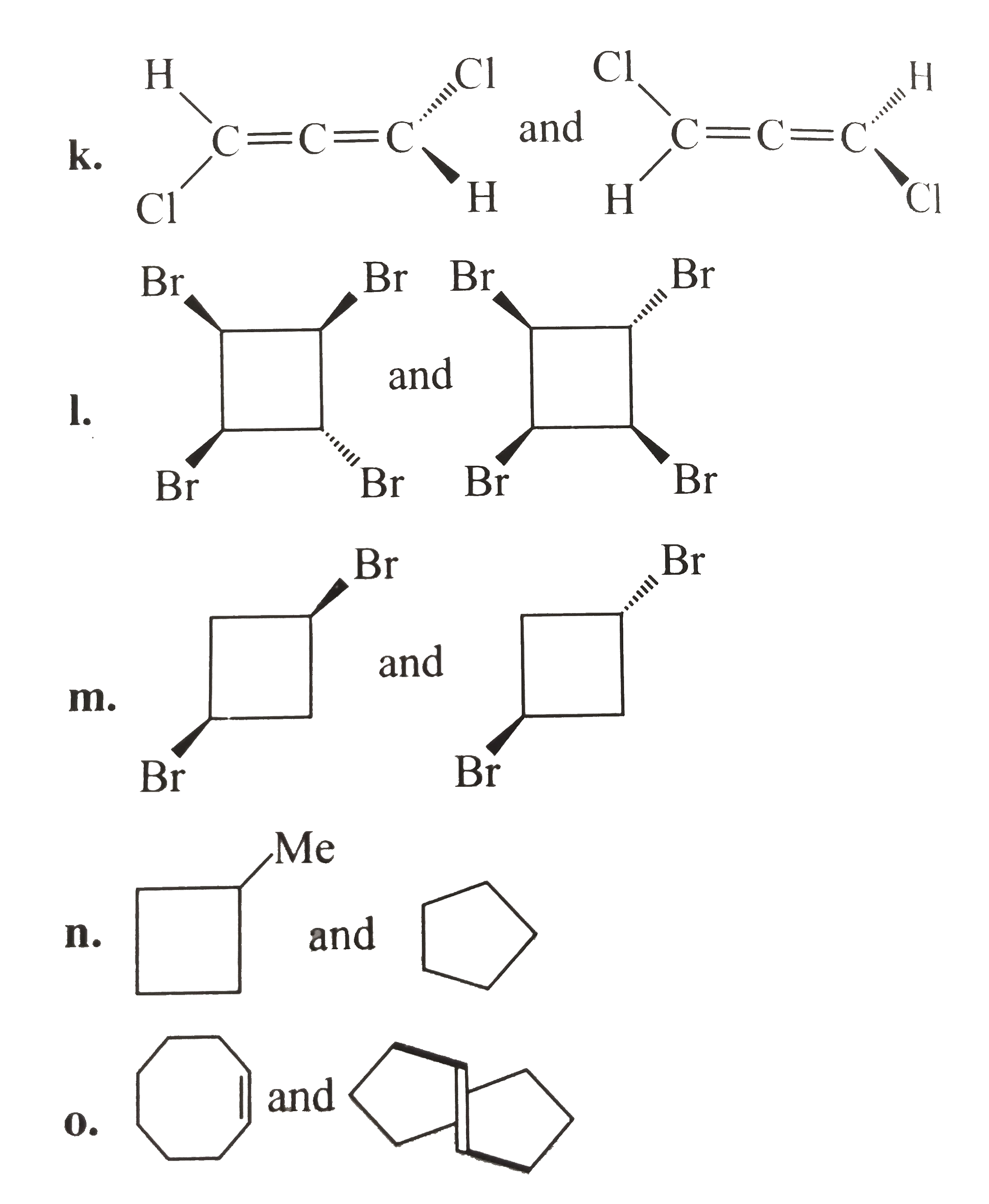
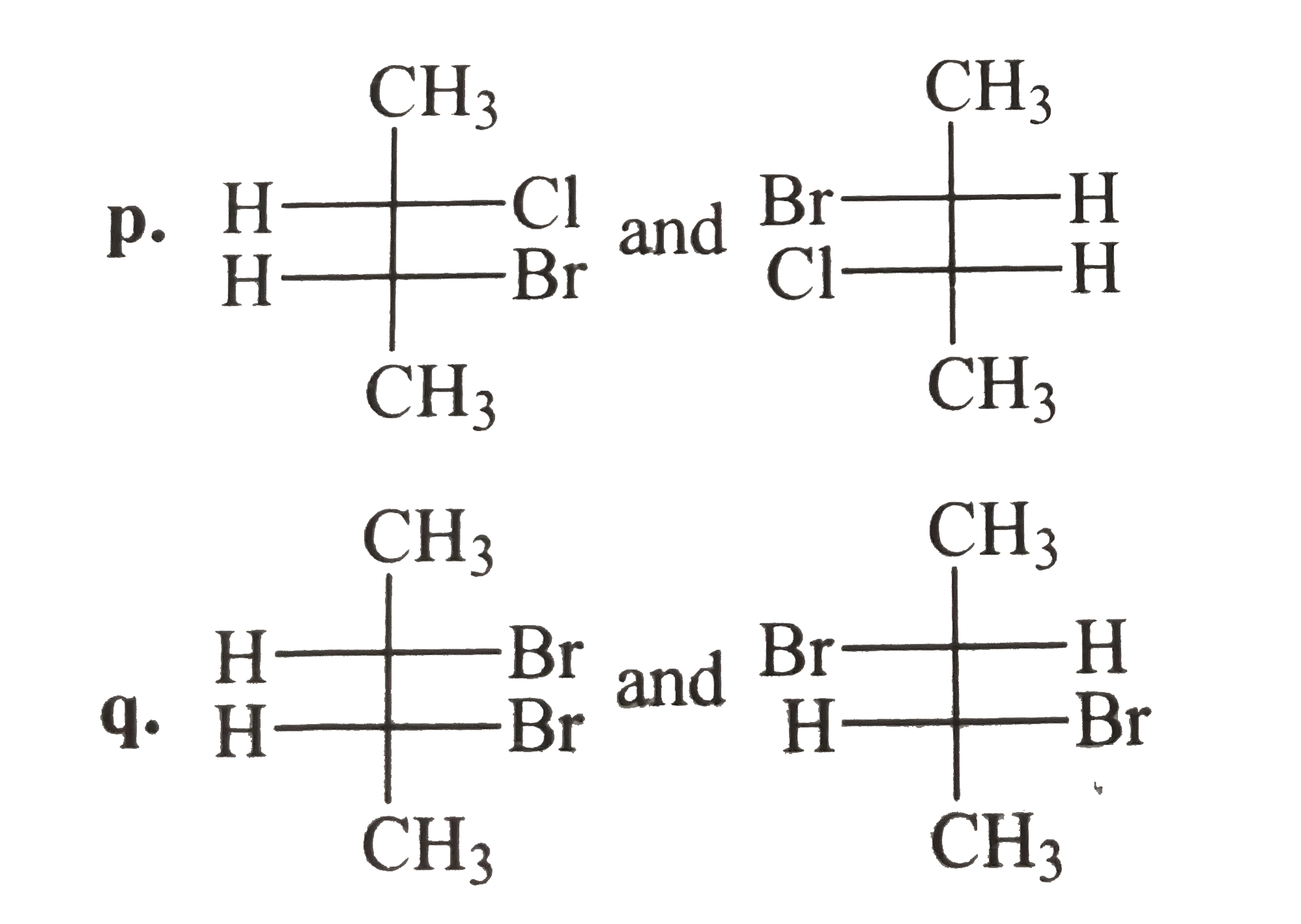
View SolutionWhich of the following pairs of compounds are enantiomers?
View SolutionWhich one of the following pairs of compounds represent the metamers ?
View SolutionIn which one of the following pairs of terms both represent one and the same thing?
View Solution

